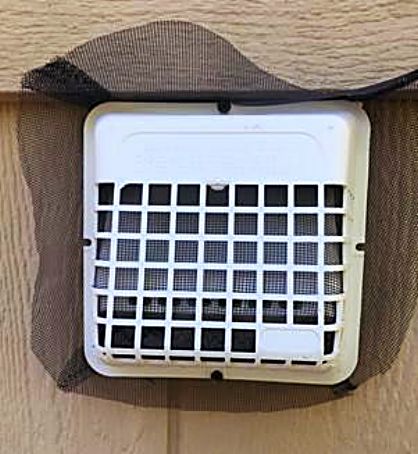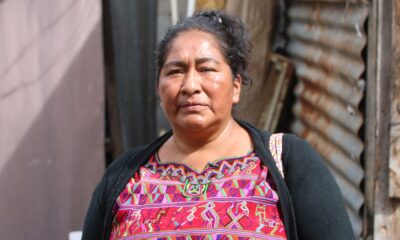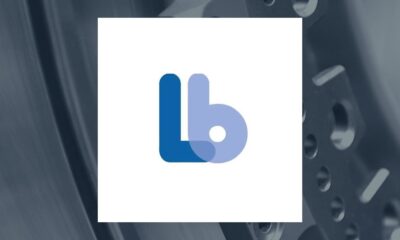Top Stories
Urgent Study Reveals Household Dryers Emit Microplastics NOW

UPDATE: A groundbreaking study from the Desert Research Institute (DRI) reveals that household dryers are a major source of microplastics, releasing an astonishing 3,500 metric tons of microfibers annually across the United States—equivalent to 30 times the weight of the Statue of Liberty. This urgent finding highlights an overlooked environmental threat as researchers call for immediate action.
The study, published by DRI and supported by the League to Save Lake Tahoe, utilized citizen science to collect real-world data about dryer emissions. Lead author Monica Arienzo, director of DRI’s microplastics and environmental chemistry lab, noted that her initial discovery of microfibers in snow five years ago prompted her inquiry into their sources, leading to this critical research.
“Every time you dry your clothes, hot air is vented, and your lint filter is the only thing that’s stopping those fibers from exiting the vent,” Arienzo stated. The study emphasizes that while washing clothes is known to release microfibers into water, vented dryers also contribute significantly to airborne microplastics.
During the research, which took place in 2020, volunteers from the League to Save Lake Tahoe recorded data from 76 dryer loads, with 38 loads from households not using mesh covers to capture microfibers. The results showed that cotton was the most common fiber collected, alongside substantial amounts of polyester and fleece, which are plastic-based materials.
The implications of these findings are profound. Both the environmental and health impacts of microplastics are under scrutiny, as the chemical treatments on textiles can release harmful substances into ecosystems. “This study is really the first of its kind,” said Laura Patten, the League’s natural resources director and co-author of the study. She added, “It moves forward our understanding of how pollutants get into the environment.”
To combat this issue, the researchers recommend regular disposal of lint and suggest sealing it in a plastic bag. Additionally, installing more efficient lint filters and considering air-drying clothes can make a significant difference in reducing microfiber emissions.
“This could motivate people to think about what clothing materials they buy,” Patten remarked, highlighting the long-lasting effects of microplastics on health and water quality. The study calls for a re-evaluation of textile production and policies related to microplastics pollution, similar to initiatives addressing other pollutants like styrofoam and plastic water bottles.
Future research is on the horizon, with DRI receiving funding from the Department of Defense to investigate the environmental impacts of chemically treated clothing, including military uniforms. Arienzo expressed her desire to continue collaborating with the League for further citizen science initiatives in the Tahoe region.
As the issue of microplastics gains momentum, Lake Tahoe is emerging as a leader in innovative research that could extend beyond its borders. “Citizen science supercharges how quickly we can build and expand the base of scientific knowledge,” Patten stated, emphasizing the vital role of volunteers in this research.
For those interested in contributing to ongoing environmental efforts, you can volunteer with the League to Save Lake Tahoe at keeptahoeblue.org/volunteer. For full details on this pivotal study, access it online at doi.org/10.1093/etojnl/vgaf222.
This urgent revelation about household dryers demands immediate awareness and action—share this news to inform others about the hidden environmental costs of everyday appliances.
-

 World5 days ago
World5 days agoExposing the Reality Behind Guatemala’s Garment Industry
-

 Politics5 days ago
Politics5 days agoLB Pharmaceuticals Quiet Period Ends October 21, Analysts Weigh In
-

 World5 days ago
World5 days agoHamas to Return Remains of Additional Hostage on Friday
-

 Business5 days ago
Business5 days agoRoyal Bank of Canada Upgrades Ovintiv to Outperform Rating
-

 Sports5 days ago
Sports5 days agoSaquon Barkley Reflects on James Franklin’s Dismissal from Penn State
-

 Science3 days ago
Science3 days agoYale School of the Environment Launches Accelerated Master’s Programs
-

 Health5 days ago
Health5 days agoFDA Announces First Nine Recipients of National Priority Vouchers
-

 Science5 days ago
Science5 days agoMIT Develops 3D Brain Models from Patient Cells for Custom Therapies
-

 Entertainment5 days ago
Entertainment5 days agoOlivia Nuzzi’s Memoir Set to Uncover RFK Jr.’s Controversial Texts
-

 Lifestyle3 days ago
Lifestyle3 days agoHistorian Seeks Help to Uncover Cherry Street’s Past
-

 Lifestyle5 days ago
Lifestyle5 days agoSouth Los Angeles Intersection Renamed to Honor Activist Danny Bakewell Sr.
-

 Entertainment5 days ago
Entertainment5 days agoSylvester Stallone’s ‘Alarum’ Surges in Streaming Despite Poor Reviews







